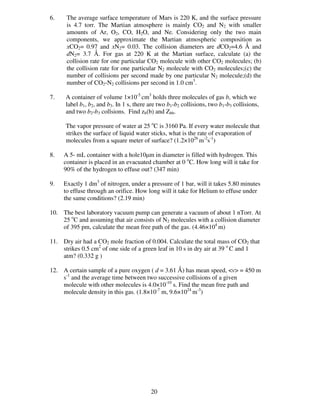The document provides examples and exercises on collision theory and gas kinetics. It defines key terms like collision frequency, collision density, collision flux, and mean free path. It gives examples of calculating these values for different gases in various conditions. The exercises ask the reader to calculate collision properties for gases like hydrogen, oxygen, nitrogen, and others at different temperatures and pressures.




